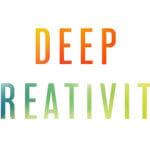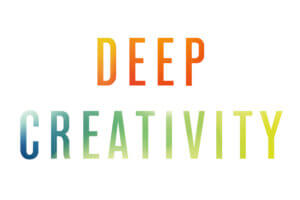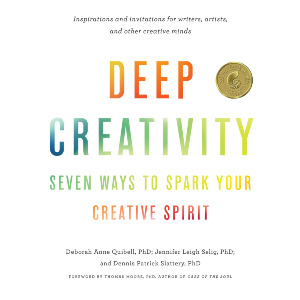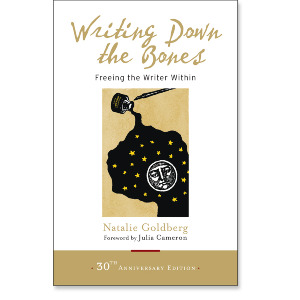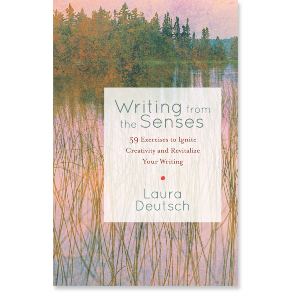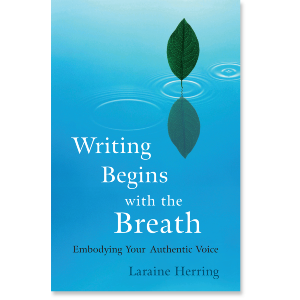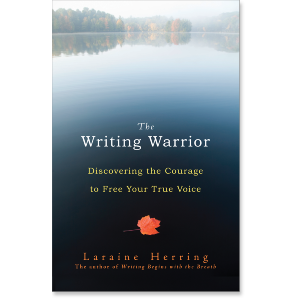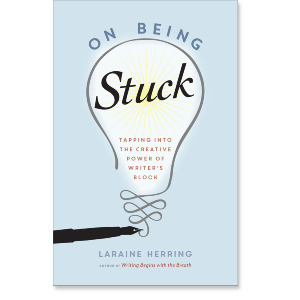An Excerpt from Deep Creativity
Excerpt by Jennifer Leigh Selig
EKPHRASIS
When I was preparing to teach a class to my Engaged Humanities and the Creative Life master’s degree students titled the Complex Nature of Inspiration, I came across a word I had never heard that perfectly described that week’s subject matter. The word is ekphrasis, and I discovered it in an essay by James A. W. Heffernan called “Ekphrasis and Representation.” Heffernan defines ekphrasis as the “verbal representation of graphic representation.” More simply defined, words inspired by images.
Heffernan offers the example of William Carlos Williams’s 1962 poem “Hunters in the Snow,” which is a response to Pieter Bruegel’s 1565 painting Return of the Hunters. Williams’s poem is a literal representation of the image on the canvas, a translation of sorts, from one medium to another. Of course, there’s more to it than that, for there is art and craft in Williams’s choice of words and the way he breaks up his lines and stanzas, but it’s clearly an ekphrastic poem.
Heffernan contrasts this kind of direct translation with another form of ekphrastic response, where the writer turns the static image into a narrative. This can be achieved in several ways. First, the writer can imagine the story surrounding the creation of the image. Think of the 1999 book Girl with the Pearl Earring, where Tracy Chevalier takes artistic license in telling the story of the creation of the painting of the same name by Johannes Vermeer in 1665.
Second, narrative ekphrasis can imagine the story depicted in the art and give voice to its characters or objects. One example is Adrienne Rich’s 1965 poem “Mourning Picture,” a response to Edwin Romanzo Elmer’s 1890 painting Mourning Picture. Elmer’s painting is of a man and a woman sitting outside their two-story house, and in the foreground, a young girl touches a lamb while looking over her shoulder toward the couple. The girl is Elmer’s recently deceased daughter Effie—thus, the word mourning in the title. Rich’s poem tells the story from Effie’s perspective, calling her both visible and invisible.
Another example is Wallace Stevens’s 1937 poem titled “The Man with the Blue Guitar,” an ekphrastic response to Picasso’s 1903 painting The Old Guitarist. The poem is thirty-three sections long, and its style is broken and mysterious, imitating the cubism of the painting. Stevens was notably inspired by modern painting, and by this painting in particular, and he used his art-inspired poetry to make a commentary on the rapidly fragmenting time period in which he lived.
Third, the ekphrastic narrative response may reflect upon the art form and/or our encounter with it. John Keats’s 1819 “Ode to a Grecian Urn” reflects upon the story the urn is telling, in addition to philosophizing about what it means to have a story told on an urn. Percy Bysshe Shelley’s 1818 sonnet “Ozymandias” tells the story of a poet who meets a traveler who saw a sculpture, which itself told a story.
How often does this happen? How many pieces of art are inspired by other pieces of art, either directly or indirectly?
To these examples of the ekphrastic response, I would add another. As a high school English teacher, I always did a unit on poetry, which would include having students write their own poems. Many struggled with this, and some even found it difficult to come up with an idea for a poem, so I would give them prompts: “Write a poem about a tree” or “Write a poem about your father.” Still, some students would struggle. Being a words girl myself, I had a hard time understanding this.
One year I tried something new. Instead of giving them words or ideas or topics to write about, I laid out fine art reproductions and asked them all to choose one they were drawn to. They spent five minutes at their desks staring deeply into the image, and then I asked them to write a poem. It didn’t have to be about the image, I told them, though it could be.
This was the key that unlocked the creativity of my struggling students, and indeed, some of the best poetry had nothing to do with the art itself or was only very tangentially related. It could have been a mood or a color or an expression on a face or something unconscious that the image triggered in the student that made its way onto the page.
With this example, I’m expanding the meaning of ekphrasis to include less literal or direct forms—where the connective tissue between the two art forms is visible—and pointing toward a more indirect ekphrasis, where the writer views a work of art and is inspired to create something entirely different—not in its image at all but inspired by it nonetheless.
And while we’re expanding here, I want to open up the word ekphrasis to talk about any artistic creation that is inspired by another art form, either directly or indirectly. This expansion will allow me to tell you the strangest story.
INDIRECT EKPHRASIS
One long fall day, I was driving Interstate 5 through California on my way home from visiting my family. About five hours into the seven-hour drive, my iPod served up the song “Mid-November” by Johnathan Rice. I fell into a trance listening to it and put it on repeat. About thirty minutes later, something in that song cracked open like an egg, and a story came out of it, the entire beginning right there, plot and characters and all. Only it was nothing like the story in the song.
The song speaks of a man “walking through walls” to be with his love. It’s Thursday night in New York. There’s someone called Laura with the brightest eyes, and someone else with coins on his eyes, and lovers at war, and a man who is alone. The lyrics make little sense to me, but there’s something so evocative, so haunting about the song, with Rice’s deep, scratchy vocals, and the crescendoing instrumentation. I fell into the song on that drive, fell into it like you’d fall into a deep well, and I lost the road, and I lost all sounds except the instrumentation.
And in that hollow place of surround sound, another story emerged. I saw a young man who fell in love with a stranger at a gas station. They were both traveling the same interstate. They flirted from the windows of their cars. They made rest stops together. They stopped at his friend’s house to spend the night and made love and made plans to see each other when they both settled in Los Angeles. She was driving there to pursue her acting dreams. She was beautiful and funny and quirky as hell. He was shy and rather withdrawn, but he came alive through the infectious power of her vitality. They resumed their drive again the next day, trading cars. Something horrible happened. She crashed his car. He pulled over, saw her bloody face inside. He panicked and ran away.
He ran away? Why did he run? I pulled over the car and began to write. I wrote everything I just shared with you, and then I wrote more. I discovered he had been dating her sister, unbeknownst to either of them, and I saw how he put two and two together and panicked. That didn’t seem enough to justify his running, so I wondered about his backstory, and that came to me too: an earlier car accident, a death. And I knew he would have to reckon with his guilt for running, and there was the title. (W)reckoning. Once I had the title, I knew the accident wasn’t where the story began. The beginning was his journey to find her, to make things right.
Mind you, all of this came to me in about an hour on the side of the road, typing away furiously on my laptop. I was scared to turn off the song, scared I would lose the story that issued from it
I understand that this will sound crazy to people who haven’t been possessed by an autonomous story or image that comes to you like a revelation. Depth psychology offers us some terms to understand experiences like this, terms like the collective unconscious or the imaginal realm, and while I could explain it to you using those terms, I understand my own experience more clearly as an image. There was a song, and inside that song was an egg that contained another story, and the song cracked open the egg and out came the story that I wrote down. If it were an experience of direct ekphrasis, I would have written the story of the song (if I could have understood it). This was an indirect ekphrasis, a more mysterious form of inspiration from art.
How often does this happen? How many pieces of art are inspired by other pieces of art, either directly or indirectly? How many pieces of art are a response to a call by another piece of art, which may itself be a response to an earlier piece of art?
The answer to these questions? It depends on what you mean by art.
DEFINITIONS OF ART: AN EXCURSION
Research how artists define art, and you’ll risk hours of your life going down a rabbit hole that leads to a maze that culminates in a three-dimensional web whose center is nowhere. (Or maybe the center is the BrainyQuote website, from which I derived all these definitions.) For instance, Agnes Martin, an American abstract painter, defines art in this way: “When I think of art I think of beauty.” But that begs the question, how do you define beauty? Or there’s American writer Elbert Hubbard’s cryptic definition: “Art is not a thing; it is a way.” A way of . . . ? A way to . . . ? A way where. . . ?
Many of the definitions are lovely but too obscure to help us point to something and say, “Yes, that’s art and no, that’s not art.” German composer Theodor Adorno defined art as “magic delivered from the lie of being truth.” Would that help you decide whether to invest in the painting hanging on the gallery wall? While I love the poetry of this definition by Mauritian writer and painter Malcolm de Chazal—“Art is nature speeded up and God slowed down”—I’m not sure it would help me discern between a good symphony and a bad one, especially if they were both adagios. French physiologist Claude Bernard wrote cryptically, “Art is I; science is we,” which leaves me wondering who you is.
I found plenty of definitions like Bernard’s that imitate minimalist art. Six words seems to be the average minimalist definition. English poet and critic Herbert Read contributed, “Art is the triumph over chaos.” American writer John Cheever gave us “Art is pattern informed by sensibility.” André Malraux, the French novelist, told us that “Art is a revolt against fate.” I’ll admit that the American abstract painter Ad Reinhardt won the minimalist game with the three-word definition, “Art is Art,” though I didn’t find that one very helpful until he added the clarifying sentence, “Everything else is everything else.”
Nature is often implicated in the definition of art. French painter Paul Cézanne wrote, “Art is a harmony parallel to nature,” but the Russian-French artist Marc Chagall considered it not parallel to, but an extension of nature, writing, “Great art picks up where nature ends.” Roman philosopher and dramatist Seneca gave us, “All art is but imitation of nature.” So art is not parallel to nature, or an extension of it, but a mirror, and perhaps a poor one at that. American poet Joyce Kilmer points to the poverty of art against nature in her line, “I think that I shall never see a poem as lovely as a tree.” Italian-American composer Gian Carol Menotti agrees with that sentiment, defining art as “the unceasing effort to compete with the beauty of flowers—and never succeeding.”
American singer/songwriter Beck expands on this relationship between art and nature, defining art as “the child of Nature; yes, her darling child, in whom we trace the features of the mother’s face, her aspect and her attitude.” Both nature and art are often personified as a woman. German poet Friedrich Schiller called art “the daughter of freedom.” The nine Greek muses who inspired all art forms were beautiful women. And let’s give the last words in this section to Ludwig van Beethoven, the great German composer and pianist, who threw up his hands and said, “Art! Who comprehends her? With whom can one consult concerning this great goddess?”
Obviously, you can’t consult with me. I’m crawling on a three-dimensional web that has no center, trying to find my way back to the maze and up out of the rabbit hole I fell into when I looked up the definition of art on BrainyQuote.
BACK TO EKPHRASIS
Before our excursion down the rabbit hole, I expanded the definition of ekphrasis to encompass any piece of art inspired by another form of art, either directly or indirectly. Now, with no exact definition of art before us, we can open up the term even more. I’m thinking in particular about the phrase, “the art of living.” The Austrian writer Ernst Fischer writes, “I don’t want life to imitate art. I want life to be art” (though this quote is also attributed to Carrie Fisher). I’m thinking about how people who have mastered the art of living can inspire us to live our lives as art.
There’s a particular connection between imitation and inspiration; sometimes when people inspire us, we want to imitate them, either directly or indirectly. We can see an example of direct imitation when millions of women went to their hairdressers in the 1990s and asked to have their hair cut like Rachel’s on the television show Friends. It’s easy to scoff at this shallow example, but women’s hair has always been connected to their beauty, and beauty is always connected with art, so this imitation of Jennifer Aniston is a kind of ekphrasis (maybe we could call it “pop ekphrasis”). It didn’t inspire me personally. I learned my lesson in the late 1970s, when my boyfriend had the iconic pinup of actress Farrah Fawcett-Majors on his bedroom wall and encouraged me to “look more artful” by parting my hair in the center and feathering it back like hers. Life did not imitate art; I submit my tenth-grade yearbook picture as evidence.
Movie stars and public figures have always inspired imitation. Just think of how many men bought leather jackets inspired by James Dean and Marlon Brando, and now of course this is commodified in the form of celebrity fashion endorsements. But often it is not quite as literal as this. Sometimes we just want to be cool like him or classy like her, dignified like him or brassy like her, quirky like him or singular like her.
Artists can inspire us not just to create art but to be art, to live art. To live our lives more artfully.
I’m thinking now of the American musician Patti Smith, whose memoir Just Kids chronicled her relationship with photographer Robert Mapplethorpe in New York in the 1960s and 1970s. Here we read about two artists who inspired each other in both art and living. Mapplethorpe frequently photographed Smith, and one of those photographs graced the cover of her album titled Horses. Two decades later, Scottish singer/songwriter KT Tunstall saw the album cover, and was so inspired by Smith’s spirit, captured in that image, that she wrote her hit song “Suddenly I See.” In the lyrics, Tunstall sees a map of the world in Smith’s face, which holds her captivated. Smith makes Tunstall feel like she could be a tower, she writes, and in the refrain, she repeats how much she wants to be like Smith. Besides the song, Smith’s pose on her album cover also inspires Tunstall’s pose on her album cover Eye to the Telescope.
For lack of a (far better) term, we might see this as an example of the piggybacking nature of ekphrasis. Mapplethorpe was inspired by Smith and created a series of photographs of her. Tunstall was inspired by the album cover photograph and created her own ekphrastic song. And many other artists were inspired to collaborate and create Tunstall’s music video based upon the song-based-upon-the-photo-based-upon-the-musician who inspired the photographer. Call and response; call and response; call and response. And what moves me about this example is that Tunstall was not just inspired to create a song; she was inspired to create a life, her life, to be larger than life, walking the world like the tower of a woman that is Smith. So artists can inspire us not just to create art but to be art, to live art. To live our lives more artfully.
Let me offer one more example, a powerful one, on this theme of artful living. In 1886, George Frederic Watts created the painting Hope, which features a young blindfolded girl, sitting slumped over on a globe, playing a lyre that only has one string.
The great South African leader Nelson Mandela had a reproduction of this painting hanging in his prison cell at Robben Island (where he was jailed for eighteen of the twenty-seven years he was in prison). In a tribute to Mandela after his death, the former British Prime Minister Gordon Brown noted of Mandela’s choice, “The painting, entitled ‘Hope’, is about the boldness of a girl to believe that, even when blinded and even with a broken harp and only one string, she could still play music. Her and Mandela’s belief was that even in the most difficult and bleak of times, even when things seem hopeless, there could still be hope. . . . And we are celebrating today because the lessons that we have learned from him will live on. He teaches us that indeed no injustice can last forever. He teaches us that whenever good people of courage come together, there is infinite hope.”
More from BrainyQuote. The American actress Hedy Lamarr once said, “A good painting to me has always been like a friend. It keeps me company, comforts and inspires.” American novelist John Updike wrote that “What art offers is space—a certain breathing room for the spirit.” Hope was that painting to Mandela—company, comfort, and inspiration, breathing room for his spirit. And in turn, as Brown notes, the artful way he lived his life in prison—his goodness and his nobility, his courage and refusal to give up hope—was an inspiration to millions.
That same painting has inspired others as well, notably Martin Luther King Jr., who referenced it in a sermon on shattered dreams and blasted hopes, and President Barack Obama, who titled his book The Audacity of Hope based upon it. Obama recalls hearing his preacher give a sermon on hope based upon the painting, and in turn his preacher heard about the painting from a lecture he had attended, showing that ekphrasis can be infectious, that inspiration can be contagious.
THE CALL AND RESPONSE OF ART
Updike refers to breathing in the quote above—how art gives us breathing room for the spirit. There’s a similar notion in my essay in part 6, “The Way of the Sacred”—how those of us who are creative (whether we call ourselves artists or not) create art because we couldn’t breathe if we didn’t.
There are two movements in breathing similar to the call and response of art. First, we breathe in. Inhalation is analogous to experiencing art. We go to a museum and breathe in the work of the masters old and new. We attend a rock concert and breathe in the raw energy of the band on the stage. We sit down with our favorite author and breathe in the delightful entanglement of words on the page. Breathing in is the movement of taking art into us, art which is breathtaking to us.
But there’s a second, necessary movement, and that’s breathing out. We breathe in the art of others, let it mix with our particular chemistry, our unique spirit, and we breathe out in response. Exhalation is an ekphrastic response. It is a form of creative homage—a mirroring, an extension, a parallel, a response to the art we have taken in.
Palestinian-American poet Naomi Shihab Nye, in a YouTube video titled On Inspiration, shares that responding to poetry is as important as collecting it. She states, “We collect poems that encourage us to think in the way we need to think or look at the world, but then we also allow ourselves . . . to write a little bit.” In my terms, collecting poems is inhaling, while writing poetry is exhaling.
Nye continues by talking about fellow poet Philip Levine, who calls being inspired by an experience of being fully alive, “‘a little odd’ and also ‘delicious.’ Well everyone who falls in love with poems has that taste, that sudden savoriness of experience given to him or her wherever that poem has encountered you.” To further the analogy, to read a poem is to relish the savory food that someone has cooked for you, while writing a poem is preparing a delicious meal for someone else. We need both movements, both eating and cooking, both collecting and writing, both inhaling and exhaling, both call and response if we are to be really totally alive as artists, as creators. We need to walk among great works of art with eyes wide open; we need to listen to great pieces of art with ears finely tuned; we need to read and study the lives of artists for clues to creating art as well as living life artfully. And then we need to respond, with our humble poems or stories, with our pencil sketches or keyboard creations, with our feathered hairstyles and leather jackets and songs of homage, with our lives lived more attuned to the art around us and the art within us.
Ekphrasis can be infectious, inspiration can be contagious.
EXERCISES
Jennifer invites you to these reflections.
- Scanning your creative history, what have you created that could qualify as an ekphrastic response, both in life and art?
- What’s interesting to me about the literal definition of ekphrastic art—“making words from images”—is that it’s a whole-brain response. That is, the right brain is typically seen as our image processor, and our left brain, our word processor. So when we view ekphrastic art, those images side by side with those words, we are having, at least symbolically, a whole-brain experience. Do you favor your left brain or right brain when it comes to your creativity? Do you think more in words or in images? Is your creative output more skewed toward words or images? What might it look like to “balance your brain” by bringing in more of your opposite inclination into your creative practice?
- I end my essay by contrasting two different movements within the call and response to art. I label them alternately, breathing in and breathing out; cooking and eating; collecting and writing (though you could substitute any creative verb here for writing, like painting or building or designing or your creative activity of choice). Where are you currently at in your call-and-response cycle? Are you breathing in more than you’re breathing out? Have you been cooking more than you’re eating? Collecting more than you’re creating? Is there a shift you might need to make? A different balance you might want to strike?
Can you create something from these reflections?
Jennifer invites you to this practice.
THE EKPHRASTIC RESPONSE
I’m sure you could see this practice coming from a million miles away! Yes, I’m going to suggest you practice the ekphrastic response.
In my essay, I mentioned the more restrictive definition of ekphrasis, which is “words inspired by images,” and a more expansive definition: “where any art inspires any other art within or across genres.” I mentioned two different inflections of this response: direct and indirect. Direct is when you can see the obvious connective tissue between the two responses, and indirect is a more oblique influence (such as I experienced when a song cracked open an egg wherein lay a screenplay, which ostensibly had nothing to do with the song).
You can practice any combination of these forms. Perhaps you’ll want to practice a literal form of direct ekphrasis, and you’ll flip through an art book until you’re inspired by an image and want to write a poem about it. Perhaps you’d like to work in the same genre, so you flip through a book of poems instead, and write a poem inspired by a poem.
Sometimes, your creative unconscious may override your choice and produce something entirely different than what you intended—stay open to this! For instance, you may flip through either a book of art or a book of poetry and simply allow yourself to be seized by inspiration—maybe you’ll make a collage or write a song or sculpt a figure or create a fabric pattern or find a whole screenplay there!
The practice of ekphrastic response is particularly useful when you feel creatively blocked, or in possession of no new ideas, as it stimulates the imagination. Psalm 42:7 in the Bible begins, “Deep calls to deep,” and this applies to creativity as well. Deep creativity calls to deep creativity—let someone else’s response be your call.
Share
Related Books
$24.95 - Paperback
$16.95 - Paperback
$14.95 - Paperback
Writing Begins with the Breath
$19.95 - Paperback
$19.95 - Paperback
$16.95 - Paperback


